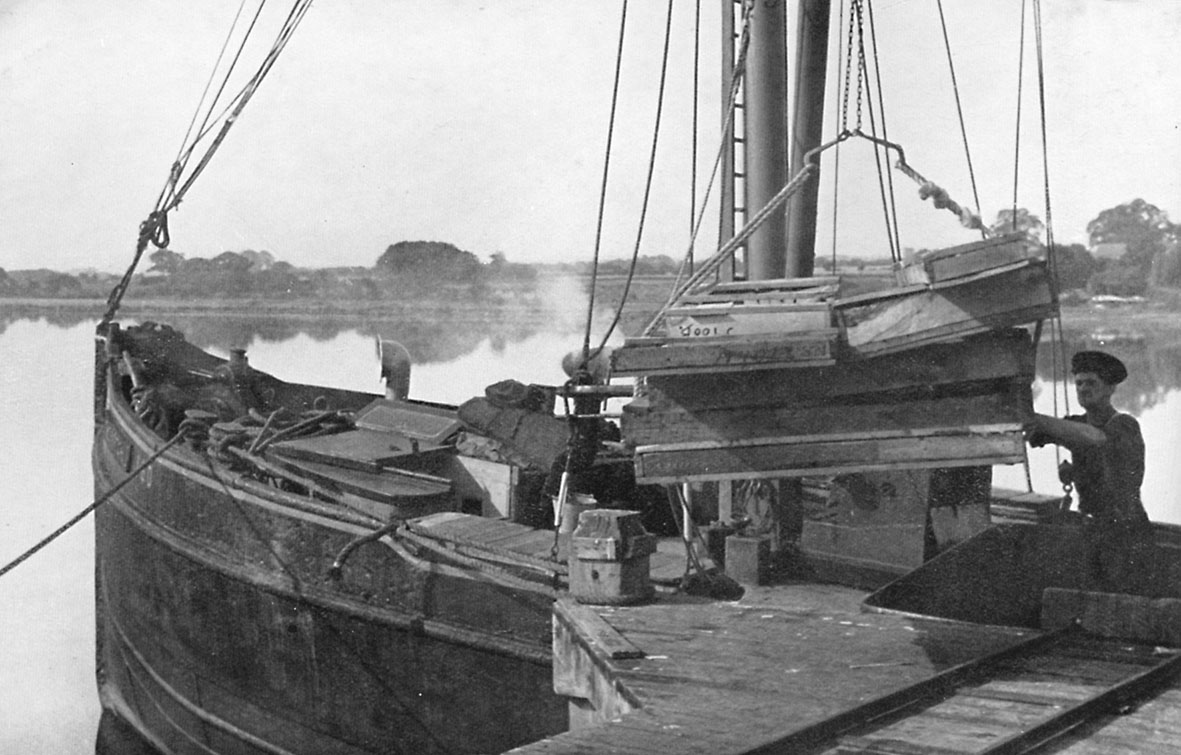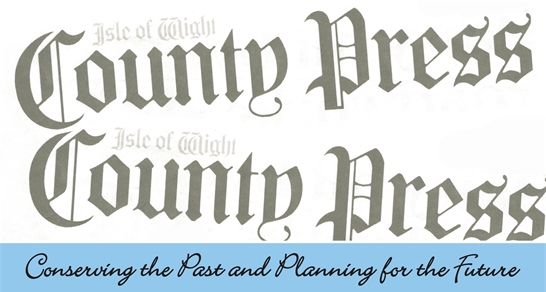October 2019
Goods to and from the Island
Being an Island, everything we need from the Mainland has to reach us by boat. Today we are used to enormous lorries arriving at the Ferry terminals, or even just the trailers of the articulated vehicles which are then stored in the ferry yard awaiting haulage to their Island destination.
The Southern Railway Ro-Ro car ferries to the Island began in the late 1920s. Red Funnel started operating car ferries in 1948 and soon started carrying lorries to unload at East Cowes.
Until the 1960s, most goods were still shipped in and out by motorised barges. These were run by several firms, including British Road Services, Island Transport Co. and Vectis Transport, which were amalgamated smaller Island firms, such as Crouchers and Shepard Brothers. Many of these barges travelled directly up to Newport, the capital of the Island. The Newport Brewery, Mew Langtons, had their own craft, as did the Cement Works at Dodnor.
Newport Quays were thriving, with new warehouses and quays being built around 1900 to the north of the railway bridge. The latest was the Jubilee Stores. Many barges unloaded their goods here in the 1930s. Great wooden slatted stores housed all the timber that was being imported to the Island.
Many goods arrived on the barges in barrels, boxes or large sacks. These all had to be transferred to stores. Cranes on the buildings and quayside lifted the goods from the barges. Examples of those cranes can still be seen on the quay. Onward shipment was by motor lorry, steam lorry or horse and cart. Shepard Bros began experimenting with an early form of containerisation in the late 1930s.

Barge unloading veneer at the Folly Works during WWII
During WWII craft were busy bringing veneer to the plywood factory at the Folly, and taking the finished product to build aircraft and torpedo boats. Six local vessels from the Medina took part in the Dunkirk evacuation.
We are lucky in Newport because some of the older warehouses survive. Partly this is because the small craft able to navigate the upper reaches of the Medina could not carry more goods, so larger warehouses were not required. Sea Street has excellent examples of warehouses dating from the 18th and 19th centuries. These have found new uses as accommodation, and as the Quay Arts Centre, which incorporates part of the Brewery store. Quay Arts also has the Rope Store, which has a distinctive twisted roof. The Bargemens’ Rest was once the Derrick Store. The derrick was used to lift goods over the public road. The character of this part of Newport has been preserved, albeit without the barges.
The first steam driven craft were built for Shepard Bros in 1898 by J S Whites of Cowes. They soon replaced the sailing barges that had plied the river for centuries.
Take a walk around the harbour at Newport. Imagine that river full of vessels loading and unloading goods. Listen in your mind to the noise of the dockers working. So much has changed.
Sarah Burdett
[Go Back]

